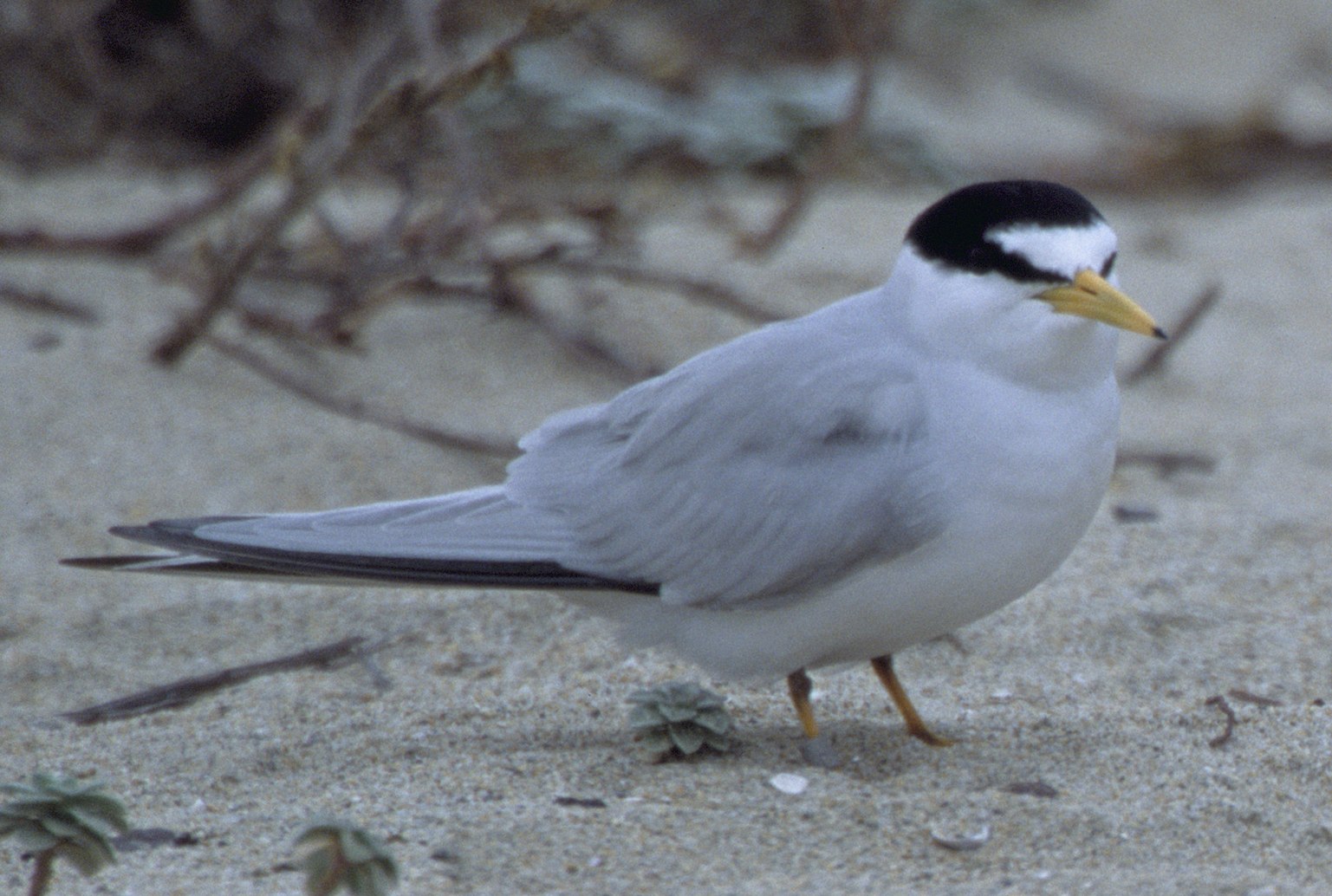- California Least Tern
Taxobox
name = California Least Tern

status = EN | status_system = IUCN3.1
regnum =Animal ia
phylum = Chordata
classis = Aves
ordo =Charadriiformes
familia =Sternidae
genus = "Sternula "
species = "S. antillarum"
subspecies = "S. a. brownii"
trinomial = "Sternula antillarum brownii"
trinomial_authority = (Mearns 1916)The California Least Tern, "Sternula antillarum brownii", is a subspecies of
Least Tern that breeds primarily in bays of thePacific Ocean within a very limited range of Southern California, inSan Francisco Bay and in and extreme northernMexico . This migratory bird is a U.S. federally listed endangeredsubspecies . The total population of the subspecies amounted to 582 breeding pairs in the year 1974, when census work on this bird began. While numbers have gradually increased with its protected status, the species is still vulnerable to natural disasters or further disturbance of man.Nesting and breeding behavior
Wintering locations are actually unknown, but suspected to include the
South American Pacific Coast. s. Where the surface is hard, this species may use an artificial indentation (such as a deep dried footprint) to form the nest basin. The breeding colonies are not dense and may appear along marine or estuarine shores in areas free from humans or predators.The nest density may be as low as several per acre, but in
San Diego County , densities of 200 nests per acre have been observed. Most commonly theclutch size is two or three, but it is not rare to consist of either one or four eggs. Both female and maleincubate the eggs for a period of about three weeks, and both parents tend thesemiprecocial young. Young birds can fly at age four weeks. After formation of the new families, groupings of birds may appear atlacustrine settings in proximity to the coast. Late season nesting may be renests or late season arrival activity. In any case, the bulk of the population has left California by the end of August.Feeding and roosting characteristics
The California Least Tern hunts primarily in shallow
estuaries andlagoons , where smaller fishes are abundant. They hover until spottingprey , and then plunge into the water without full submersion to extract prey. In the bays and lagoons ofSouthern California and northern Mexico, the favored prey includeanchovy ,smelt , silversides,shiner surfperch and smallcrustacean s. Not infrequently the terns feed near shore in the open ocean, especially in proximity to lagoons or bay mouths.Adults do not require cover, so that they commonly roost on the open ground. After young chicks are three days old, they are brooded less frequently by parents and require wind blocks and shade. Notable disruption of colonies can occur from predation by
Burrowing Owl s andAmerican Kestrel s (Collins, 1980). Predation by domestic cats has been observed in at least one colony (California Wildlife, 1990).Relation to other least terns
The California Least Tern is a subspecies of the
Least Tern ("Sternula antillarum") that breeds on theUnited States Atlantic coast fromMaine toFlorida andTexas . "Sternula antillarum" is also found in breeding grounds along rivers in the midwest andGreat Plains of the United States. Both the California subspecies and the nominate race of Least Tern are approximately 23 centimeters in length. Both have conspicuous black markings on their outermost primaries and fly over water with a distinctive hunchback appearance, will bills pointing slightly downward.The Least Tern is itself often considered conspecific with the
Little Tern . "Sternula albifrons", which has an extensive Old World distribution. The Little Tern differs from Least Tern mainly in that its rump and tail are white, not grey, and it has a different call.Bibliography
* "Audubon Handbook: Western Birds", McGraw Hill Book Company (1988) ISBN 0-07-019977-9
* B. Massey, "Breeding Biology of the California least tern", Proceedings Linn. Society, New York 72:1-24 (1974)
* "California Wildlife, Volume II,
Bird s", ed, by David C. Zeiner, William F. Laudenslayer and Kenneth E. Meyer, published by theCalifornia Department of Fish and Game ,Nov , 1988.* Gary Deghi, C. Michael Hogan et al., Biological Assessment for the Proposed
Tijuana /San Diego Joint InnternationalWastewater Treatment Plant", Publication of theUnited States Environmental Protection Agency Region IX, Earth Metrics Incorporated, Burlingame, CA with Harvey and Stanley, Alviso, CA*L. Collins and S. Bailey, "California least tern nesting season at Alameda Naval Air Station, 1980 Admin. Rep. 25pp.
*Olsen and Larsson, "Terns of Europe and North America" ISBN 0-7136-4056-1
Wikimedia Foundation. 2010.
